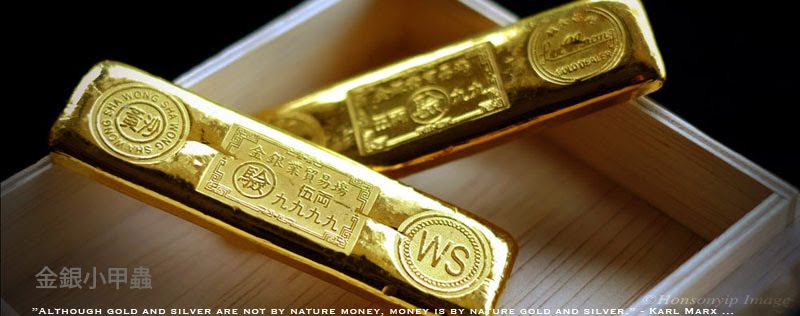Giant Squid Discovered On California Coast And Scientists Suspect Radioactive Gigantism
SANTA MONICA, CA
-- For the second time in recent months, a giant sea creature has
washed ashore in California. First it was a rare oarfish that had grown
to a freakish 100-foot length. This time it was a giant squid
measuring a whopping 160 feet from head to tentacle tip.
These giants look different but experts believe they share one
important commonality: they both come from the waters near the Fukushima
Dai-ichi Nuclear Power Plant in the Futaba District of Japan.
Scientists believe that following the 2011 disaster at the Fukushima
Dai-ichi Nuclear Power Plant an unknown number of sea creatures suffered
genetic mutations that triggered uncontrolled growth – or “radioactive
gigantism.”
Unfortunately, this cadre of mutant giants seems to be drifting
towards the continental U.S. Local officials in Santa Monica, CA –
where the creature drifted ashore – tried to calm residents. “This
creature appears to be deceased and even if alive only thrives in
water,” said Santa Monica Parks Manager Cynthia Beard. “We intend to
move the creature in pieces to Scripps Research Institute so that they
can study it,” she noted.
Although not yet well understood, radioactive gigantism is said to
result when radiation causes changes to the growth regulating portions
of the DNA of affected organisms. When growth regulators fail to
control cellular growth, an organism may reach many times its regular
body size.
Local radioactive gigantism expert Santa Marino College biology
professor Martin L. Grimm, PhD said that the nuclear disaster may have
had some unintended benefits. “These creatures give us the chance to
study radioactive gigantism,” he said. Grimm believes that harnessing
radioactive gigantism may be like harnessing the atom to create atomic
energy. “Imagine a tuna fish that could feed a city the size of Austin,
Texas,” he said. “This is the possibility of radioactive gigantism.”
Others find the giant sea creatures to be a potential safety
concern. Even before the giant squid washed ashore, the U.S. Coast
Guard had issued a “blue alert” for residents in central and southern
Californian coasts “to remain watchful.” Yesterday Admiral Sandy
Duncan-Roberts said that she would need to raise the awareness level to a
“yellow alert” which asks resident to “exercise caution” along the
shoreline.
Are giant sea creatures really a threat for those on land? “Take
Jaws but make him the size of a Manhattan skyscraper,” said Bruce
Kenner, a marine biologist at UC San Diego. Kenner thinks that
gigantism might distort sea creatures' navigational systems. “If that
guy took a wrong turn onto the coastline he could level 40 city blocks
thrashing before he comes to rest,” he said.
Residents are anxious now that a second creature has surfaced.
“Before we only worried about parking when we went to the beach,” said
Marquise Griffon. “Now we have to worry about Godzilla [stuff] coming
after us.”
If any residents spot an unusually sized sea creature, they
should call the U.S. Coast Guard hotline at 1-800-BIG-FISH (or
1-800-244-3474).
UPDATE 12:53 PM PST
-- Local authorities have requested that tourists and others interested
in seeing the beached squid to refrain from visiting Santa Monica due
to traffic and safety concerns. An area around the beach has been
cordoned off to prevent sight-seers. In a statement released to the
media Gov. Jerry Brown assured local residents that the area is safe and
it is “business as usual” in Santa Monica. Gov. Brown indicated that
plans to dismember the squid for transport to Scripps Research Institute
“will not be delayed.”
UPDATE 7:36 PM PST
-- Santa Monica residents residing near the beach have reported
significant activity, but no one can get close enough to the beach to
view the scene. Two chinook helicopters have been hovering for over an
hour approximately 500 meters from where the squid was positioned early
this morning. Although not corroborated, there are reports of sporadic
popping sounds coming from the beach that from description could be
small arms fire.
http://www.lightlybraisedturnip.com/giant-squid-in-california/
2014年1月11日星期六
王冠一 日本國民 儲蓄過度
日本政府夥拍日本央行大量印鈔,期望物價盡快回升,迎接通脹回歸。不過,日本國民過度儲蓄,不願消費,或許印再多的銀紙也未必有成效。安倍能否打響擺脫通縮的如意算盤,仍是未知之數。
現 時日本國民,超額儲蓄的情況頗嚴重。企業方面,即使日圓貶值有助爭取更多出口訂單,但企業未見趁機擴張投資或加薪,只是不斷增加手頭現金。截至去年9月底 止,日本企業持有的現金總額,按年增加5.9%。換言之,企業未有積極參與加快金錢流轉(Velocity of Money)的活動,削弱了央行量寬的效果。
至於個人方面,日本國民普遍擔心經濟前景,加上經歷了超過二十年的通縮,早已養成消極的消 費習慣。截至去年底,全日本所有流通的現金,合計增加至90萬億日圓(折算約8600億美元)。如果按國家的經濟規模計,日本乃全球主要工業國中流通現金 最多的國家。舉例講,目前美國國民平均每人持有大約2029美元的流動現金,但每名日本國民竟持有超過6000美元!
雖然日本科技發達,但日本國民對一張張「銀紙」的需求,反而愈來愈大。當中以面額最高的1萬日圓鈔票,最受歡迎。自2008年以來,1萬日圓的需求累計增加了一成,足見國民收藏現金比率之高。
銀行利息長期低企,導致國民寧願把現金收藏在「枕頭底」或鞋盒,亦拒絕存放內銀行。加上日本乃全球其中一個犯罪率最低的國家,國民並不介懷持有多一點現金在身。
日 本國民不斷儲錢,但又不願消費,政府也許印多少鈔票也無法達致通脹預期。目前全日本有87%的流通現金,並非存放在銀行內,而是由個人、企業、地方政府等 持有。因此,日本政府的如意算盤是:先給予國民一點甜頭,讓他們多賺點錢;當國民的財富增加,自然會願意多點消費,降低偏高的儲蓄率。辦法就是鼓勵國民投 資股票。
日經平均指數去年累計升幅57%,但據估計,只有8%的日本家庭投資股票(大幅低於美國的30%佔比)。日本本周起實施的「個人免稅投資帳戶」,就是希望吸引長期存戶把資金投放到股市、債市和其他投資工具。
其實,日本政府為了誘發國民更多消費,構思可謂無奇不有:有建議政府應對民間持有「現金」及「存款」收稅,逼使國民投資或消費;甚至有人提出為日圓鈔票設定使用期限,逼國民盡早消費。
冠一去年的論壇中,曾提到「一字既之曰稅、加不得」。政府針對國民持有現金而抽稅,只會令國民愈反感,甚至逼使國民把手頭現金匯到海外,引發資金流出的問題。如果針對存款抽稅的話,豈不是鼓勵國民把更多現金收藏家中?
其實政府抽稅,只會令國民更加不願消費。要解決國民儲蓄過度的問題,最重要是改善經濟。有工作、有人工加,人民自然樂於消費。
現 時日本國民,超額儲蓄的情況頗嚴重。企業方面,即使日圓貶值有助爭取更多出口訂單,但企業未見趁機擴張投資或加薪,只是不斷增加手頭現金。截至去年9月底 止,日本企業持有的現金總額,按年增加5.9%。換言之,企業未有積極參與加快金錢流轉(Velocity of Money)的活動,削弱了央行量寬的效果。
至於個人方面,日本國民普遍擔心經濟前景,加上經歷了超過二十年的通縮,早已養成消極的消 費習慣。截至去年底,全日本所有流通的現金,合計增加至90萬億日圓(折算約8600億美元)。如果按國家的經濟規模計,日本乃全球主要工業國中流通現金 最多的國家。舉例講,目前美國國民平均每人持有大約2029美元的流動現金,但每名日本國民竟持有超過6000美元!
雖然日本科技發達,但日本國民對一張張「銀紙」的需求,反而愈來愈大。當中以面額最高的1萬日圓鈔票,最受歡迎。自2008年以來,1萬日圓的需求累計增加了一成,足見國民收藏現金比率之高。
銀行利息長期低企,導致國民寧願把現金收藏在「枕頭底」或鞋盒,亦拒絕存放內銀行。加上日本乃全球其中一個犯罪率最低的國家,國民並不介懷持有多一點現金在身。
日 本國民不斷儲錢,但又不願消費,政府也許印多少鈔票也無法達致通脹預期。目前全日本有87%的流通現金,並非存放在銀行內,而是由個人、企業、地方政府等 持有。因此,日本政府的如意算盤是:先給予國民一點甜頭,讓他們多賺點錢;當國民的財富增加,自然會願意多點消費,降低偏高的儲蓄率。辦法就是鼓勵國民投 資股票。
日經平均指數去年累計升幅57%,但據估計,只有8%的日本家庭投資股票(大幅低於美國的30%佔比)。日本本周起實施的「個人免稅投資帳戶」,就是希望吸引長期存戶把資金投放到股市、債市和其他投資工具。
其實,日本政府為了誘發國民更多消費,構思可謂無奇不有:有建議政府應對民間持有「現金」及「存款」收稅,逼使國民投資或消費;甚至有人提出為日圓鈔票設定使用期限,逼國民盡早消費。
冠一去年的論壇中,曾提到「一字既之曰稅、加不得」。政府針對國民持有現金而抽稅,只會令國民愈反感,甚至逼使國民把手頭現金匯到海外,引發資金流出的問題。如果針對存款抽稅的話,豈不是鼓勵國民把更多現金收藏家中?
其實政府抽稅,只會令國民更加不願消費。要解決國民儲蓄過度的問題,最重要是改善經濟。有工作、有人工加,人民自然樂於消費。
上海金交所 計劃上半年 在上海自貿區啟動黃金國際板
本週五(1月10日)消息,上海黃金交易所計劃今年上半年在上海自由貿易區內啟動黃金國際板,以吸引海外資本投資中國黃金市場。
金交所副總經理宋鈺勤接受上海日報採訪時表示,該所正爭取在上半年建立國際板。
他表示國際板今年內肯定會啟動,並稱國際板的合約將以人民幣而非外匯計價。
他稱金交所目前正在自貿區內尋找保稅倉庫的場地。
上海自貿區於去年9月成立,是中國經濟和金融體系重大改革的試點,包括人民幣匯率和利率自由化。此前據上證報報導,上海自貿區今年將推5項創新功能:深化大宗商品現貨市場功能,在區內建設涉及國計民生的能源、農產品等的大宗商品現貨市場;建設面向國際的金融交易市場;搭建雙向跨境投資平台;大力拓展融資租賃的服務功能;積極引進各類境內外的機構。
上海金交所是全球最大的實物黃金交易所。中國所有的現貨黃金交易都必須在該交易所進行。現在上海的一些金融交易市場,包括上海黃金交易所,外匯交易中心,以及上海地方的股權交易中心,聯合產權交易所,以及其他省市的金融市場,都有意在自貿區內建設面向國際的金融要素市場。
貝萊德:礦企關閉高成本礦山 將導致黃金供應大幅下滑
貝萊德集團(BlackRock Inc.)全球礦業基金經理Evy Hambro週五(1月10日)在接受媒體採訪時表示,由於礦企不斷削減成本,並轉向收益更高的礦山(抑制高成本礦山的黃金產量),預計供應很快就會以“相當快”的速度下滑。
Hambro稱,“在目前國際金價下跌的大環境下,極少有礦企能從中獲利,如果未來多數礦企繼續以上述形式來維持收支平衡,則黃金產量將很快開始下滑。”2013年迫於金價下跌的壓力,黃金礦業的巨頭--巴里克黃金公司(Barrick Gold Corp)曾相繼出售旗下位於澳大利亞的三座礦山。
同時巴里克首席執行官Jamie Sokalsky也強調,未來還會進一步出售公司旗下的資產。另外,哈莫尼黃金公司(Harmony Gold Mining Co)近期也表示將進一步削減成本,其中包括設備以及勘探的支出。數據顯示,2013年費城證券交易所(Philadelphia Stock Exchange Gold)黃金白銀指數下滑49%,因美國經濟持續改善,同時投資者已逐漸對貴金屬的保值作用失去信心。
Hambro稱,“在目前國際金價下跌的大環境下,極少有礦企能從中獲利,如果未來多數礦企繼續以上述形式來維持收支平衡,則黃金產量將很快開始下滑。”2013年迫於金價下跌的壓力,黃金礦業的巨頭--巴里克黃金公司(Barrick Gold Corp)曾相繼出售旗下位於澳大利亞的三座礦山。
同時巴里克首席執行官Jamie Sokalsky也強調,未來還會進一步出售公司旗下的資產。另外,哈莫尼黃金公司(Harmony Gold Mining Co)近期也表示將進一步削減成本,其中包括設備以及勘探的支出。數據顯示,2013年費城證券交易所(Philadelphia Stock Exchange Gold)黃金白銀指數下滑49%,因美國經濟持續改善,同時投資者已逐漸對貴金屬的保值作用失去信心。
中國或已成為全球第三黃金儲備國
China Seen by Bloomberg Industries Boosting Bank Gold Reserves
China's Gold Reserves At Least 2.5 Times Higher Than Reported, ‘De-Americanisation’ Continues
據外媒週五(1月10日)公佈的一份行業報告顯示,2013年中國可能已經超越了意大利和法國,成為全球第三大黃金儲備國。
該報告內顯示,2013年中國的黃金儲備可能達到約2710公噸,遠高於中國最後一次在2009年4月份報告的1054噸。根據世界黃金協會(WCG)提供的數據顯示,意大利黃金儲備為2451.8噸,法國為2435.4噸。而美國黃金儲備最多,為8133.5噸。
高級金屬與礦業分析師Kenneth W Hoffman在本次報告中指出,2013年中國央行可能增持622噸黃金,而2012年可能增持380噸。
Hoffman表示,“根據我們和中國及蒙古官員的交流,顯示中國已經感覺自己有必要持有跟美國一樣多的黃金。此前國際金價大跌後,各方面都在議論瑞士的提煉廠一直在冶煉黃金並將其運到香港,然後進口至中國大陸。”
數據顯示,由於2013年國際金價下跌28%,並錄得1981年以來最大年度跌幅,全球黃金ETF持倉在這一年中減少超過869噸。
Hoffman補充道,”這一年裡,黃金一直在從西方向東方轉移,”
世界黃金協會數據還顯示,截至2013年9月30日的12個月中,中國珠寶、金條和金幣需求增長30%,達996.3公噸;印度黃金需求增長24%,至977.6噸。
China's Gold Reserves At Least 2.5 Times Higher Than Reported, ‘De-Americanisation’ Continues
據外媒週五(1月10日)公佈的一份行業報告顯示,2013年中國可能已經超越了意大利和法國,成為全球第三大黃金儲備國。
該報告內顯示,2013年中國的黃金儲備可能達到約2710公噸,遠高於中國最後一次在2009年4月份報告的1054噸。根據世界黃金協會(WCG)提供的數據顯示,意大利黃金儲備為2451.8噸,法國為2435.4噸。而美國黃金儲備最多,為8133.5噸。
 |
| (中國黃金儲備可能超出公佈值的2.5倍) |
高級金屬與礦業分析師Kenneth W Hoffman在本次報告中指出,2013年中國央行可能增持622噸黃金,而2012年可能增持380噸。
Hoffman表示,“根據我們和中國及蒙古官員的交流,顯示中國已經感覺自己有必要持有跟美國一樣多的黃金。此前國際金價大跌後,各方面都在議論瑞士的提煉廠一直在冶煉黃金並將其運到香港,然後進口至中國大陸。”
數據顯示,由於2013年國際金價下跌28%,並錄得1981年以來最大年度跌幅,全球黃金ETF持倉在這一年中減少超過869噸。
Hoffman補充道,”這一年裡,黃金一直在從西方向東方轉移,”
世界黃金協會數據還顯示,截至2013年9月30日的12個月中,中國珠寶、金條和金幣需求增長30%,達996.3公噸;印度黃金需求增長24%,至977.6噸。
訂閱:
文章 (Atom)


